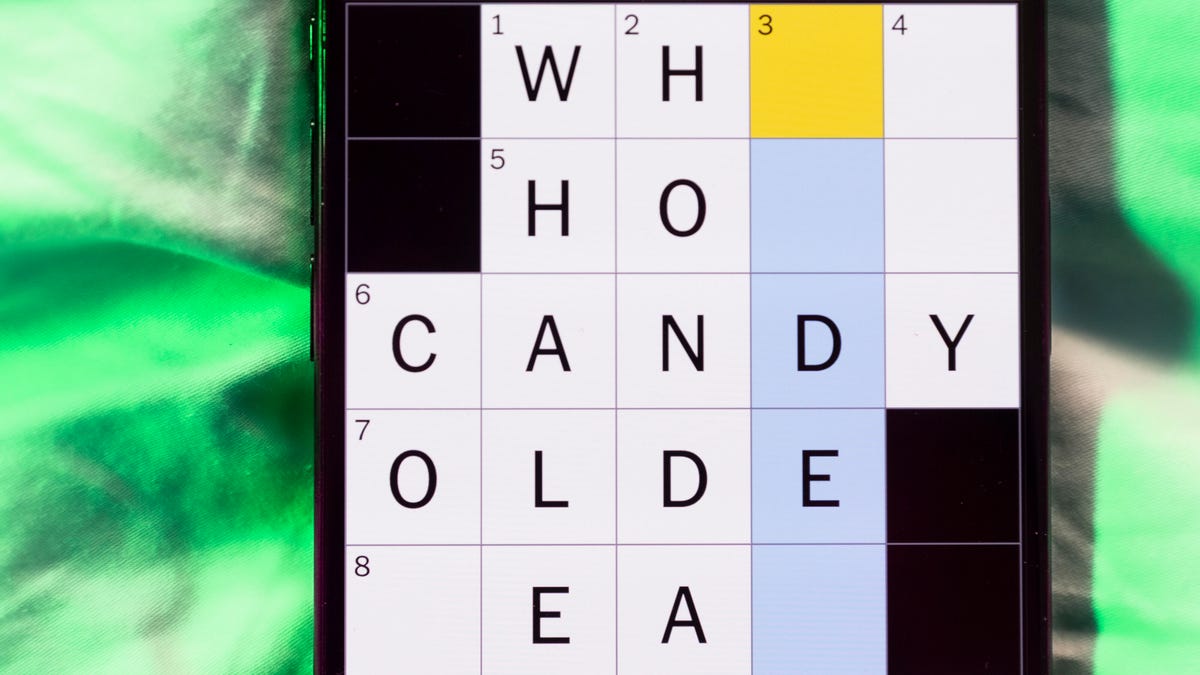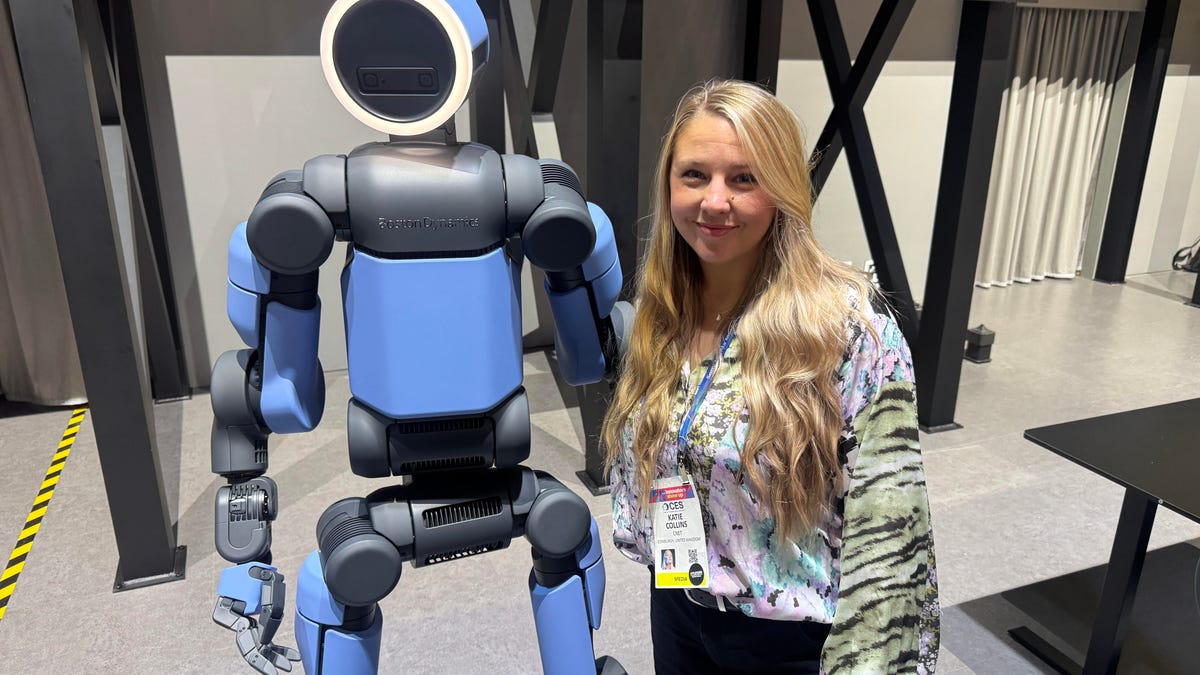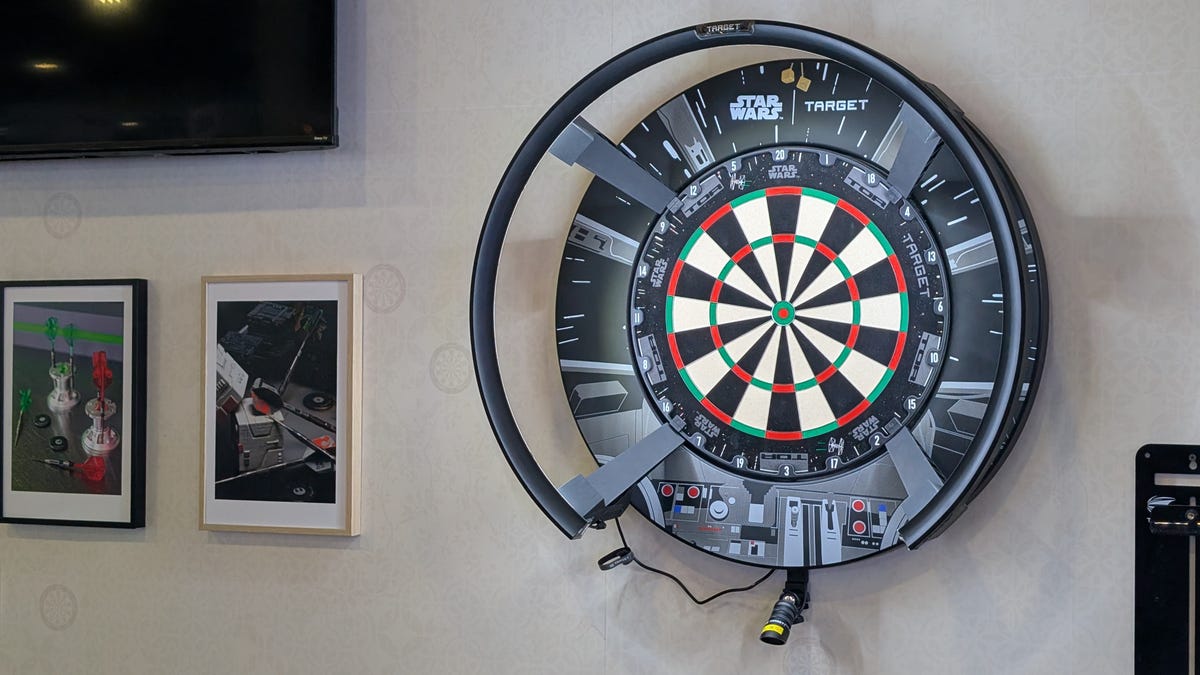Technologies
Hogwarts Legacy Recaptures That Old Harry Potter Magic
Commentary: The open-world RPG game, available now, lets you explore a previously unseen era of the wizarding world, and it’s a joy.

Playing Hogwarts Legacy instantly reminds me few fictional worlds are as bewitching as Harry Potter’s. In 1998, my mum handed me a copy of Philosopher’s Stone — published under the lesser name Sorcerer’s Stone in the US — and the mystery of that opening chapter awakened a sense of wonder. I was hooked for life.
Or so I thought. After the core book series wrapped up and there were no more movie adaptations coming, my emotional connection diminished. The overstuffed spinoffs, along with author J.K. Rowling’s inflammatory comments about transgender people, sucked the remaining fun out of the franchise, and I figured it was time to move on.
All that baggage fell away as soon as I started Hogwarts Legacy, which hit PlayStation 5, Xbox Series X, Series S and PC on Friday (it arrives on other consoles in the coming months). This open-world action RPG game, developed by Avalanche Software, is designed to let us live out our fantasies of enrolling at the iconic School of Witchcraft and Wizardry as a new student.
Having played the PS5 version for 12 hours, it captures the wonder of the early books, with an intriguing original narrative, engagingly varied gameplay and intricately designed world to explore.
Back to basics
The game sidesteps the narrative restrictions of Harry’s story by jumping way back in the timeline, to the 1890s. After creating your character, you’re whisked off on a brief opening adventure before reaching the Hogwarts School of Witchcraft and Wizardry.
Even though you’re a new student, you’re starting your magical career a little late and enroll as a fifth year. That’s presumably because having a wide-eyed first year, just 11 years old, explore dangerous caves, learn dangerous spells and battle dark wizards would feel kinda weird.
The customization options are a key element in living out your wizarding world fantasy, and they’re a joy. You can choose your character’s gender and appearance. Then you’ll pick and alter your wand (don’t worry, the one you start the game with is a loaner) and broom.
You also get sorted into a Hogwarts house (Slytherin FTW), based on a series of questions you’ll answer shortly after arriving at the school, but you can have a do-over if the initial selection isn’t to your liking.
The house you end up in doesn’t seem to change much beyond the common room, your uniform and some throwaway lines. Though teachers mention house points in some classes, you won’t actually be competing for them in the game.
Your education is occasionally interrupted by the main story, which focuses on your connection to mysterious ancient magic and a sinister dark wizard in league with the intense leader of a goblin rebellion — these baddies sport the excellent names of Victor Rookwood and Ranrok, respectively. It’s an absorbing narrative that expands this universe’s lore nicely, especially when it hints at events further back in the timeline, but sometimes fades into the background amidst all the game’s other distractions.
Living in a wizarding world
The development team’s love for Harry Potter is apparent in every aspect of Hogwarts Legacy, but shines most brightly in the world and its characters. Every teacher, student and location feels distinct and real, with a peppering of familiar names like Weasley and Black to make fans feel comfortable.
Each character is richly written, cleverly voiced — Simon Pegg plays the unpleasant headmaster — and visually diverse, so talking to them and learning about their backgrounds is fascinating. (It’s frustrating that you can’t pause during cutscenes though.) This characterisation is woven through the main story and its side quests, which range from investigating one of the castle’s mysteries and sneakily grabbing potion ingredients to wandering into a dangerous cave.
These are varied and fun in terms of gameplay, exploration and puzzle-solving, but feel even more worthwhile since they present opportunities to learn more about the quest-givers and world. And teenage tomfoolery, like sneaking into the library in the dead of night with the help of an invisibility charm, just feels like vintage Harry Potter.
Your customized avatar’s voice acting is solid, but occasionally a bit flat — like you’re overly polite or reserved. That’s preferable to listening to a realistic teenager, though. The character models are convincing enough, but the eyes sometimes move unnaturally and feel unnerving.
The world is sumptuously designed too, particularly in the beautifully gothic Hogwarts, with its moving paintings, chatty gargoyles and fascinating student banter. Every inch is begging to be explored, with heaps of collectibles and Easter eggs to discover — you hear a satisfying hint of the John Williams theme when you pick up certain items. The nearby village of Hogsmeade isn’t quite as big, but it’s still full of fun diversions.
The colorful rolling hills, plains and hamlets that make up the rest of the world can feel a little bland by comparison, despite their Elder Scrolls vibes.
The game’s technical limitations are occasionally evident as you dash around the environment too; sometimes assets will pop up at the edge of your screen and doors will appear to be stuck as the area beyond loads. It never felt game-breaking, but might briefly shake your sense of immersion. I fell through the scenery and died while wandering outside the castle once too — luckily the game had autosaved seconds beforehand and the glitch didn’t repeat.
Tricks of the magical trade
The multifaceted nature of your wizarding unfolds gradually through Hogwarts Legacy’s early hours. Your character starts out with the most basic dueling skills and spells, but the way you flick out spells with your wand gives combat a unique, kinetic flow.
You block incoming attacks with a magical shield and dodge bigger ones. The combat is similar to that seen in the Batman: Arkham and Spider-Man games, but with a sorcery aesthetic. It’s immediately gratifying, to the point where you’ll be hankering for magical battles.
Once you get to Hogwarts, you’ll learn new spells and skills in classes like Defense Against the Dark Arts, Potions and Herbology. Crucially, the flow of quests gives you time to get comfortable with each new ability before introducing another — you’ll attend a class and then use what you’ve learnt in a few story missions or side quests.
The game encourages you to use every tool in your arsenal, instead getting comfortable with a few basic combos and relying on them to get through every battle. You’ll be playing for a few hours before the skill trees are unlocked, but you’ll likely have a sense of your preferred combat style by then. Pretty much everything you do gives you experience points too, so you’ll level up at a steady clip.
There’s also a constant flow of new gear that’ll enhance your attack and defense, in addition to changing your character’s look. You can also apply the appearance of any previous clothing to new ones, so you aren’t stuck looking ridiculous just because a certain item has higher stats.
Annoyingly, inventory limits add needless friction to exploration — you can find new gear but be unable to pick it up. It’s irritating to have to fast travel to Hogsmeade to sell off excess items while wandering around the castle. You can increase your inventory with certain side quests, at least.
A joyous school reunion
Thankfully, Hogwarts Legacy doesn’t lean too hard into its school setting — you won’t have to adhere to a rigid schedule. Instead, you attend class to advance the narrative and add new gameplay elements rather than going because you have to.
The world opens up in a big way once you finish your first flying lesson and get your own broom. There’s a bit of a learning curve to soaring above it all, but it’s exhilarating and highlights the scope of the playing area.
Hogwarts Legacy evokes the same magic as the first book’s opening chapter and simpler time for the franchise, letting you explore a beautifully realized world, meet a fascinating cast of characters and embark on your own wizarding career. It’s the Harry Potter game fans have been dreaming of for decades.
Technologies
Today’s NYT Mini Crossword Answers for Friday, Jan. 9
Here are the answers for The New York Times Mini Crossword for Jan. 9.

Looking for the most recent Mini Crossword answer? Click here for today’s Mini Crossword hints, as well as our daily answers and hints for The New York Times Wordle, Strands, Connections and Connections: Sports Edition puzzles.
Need some help with today’s Mini Crossword? The Across clues were kind of tough today. Read on for all the answers. And if you could use some hints and guidance for daily solving, check out our Mini Crossword tips.
If you’re looking for today’s Wordle, Connections, Connections: Sports Edition and Strands answers, you can visit CNET’s NYT puzzle hints page.
Read more: Tips and Tricks for Solving The New York Times Mini Crossword
Let’s get to those Mini Crossword clues and answers.
Mini across clues and answers
1A clue: Question in a late-night text
Answer: YOUUP
6A clue: Plentiful
Answer: AMPLE
7A clue: Saint ___ and Nevis (Caribbean nation)
Answer: KITTS
8A clue: Baby-bringing bird
Answer: STORK
9A clue: Take care of the tab
Answer: PAY
Mini down clues and answers
1D clue: Himalayan herbivores
Answer: YAKS
2D clue: Fail to include
Answer: OMIT
3D clue: «High five!»
Answer: UPTOP
4D clue: The «U» of UV rays
Answer: ULTRA
5D clue: Annoying to deal with
Answer: PESKY
Don’t miss any of our unbiased tech content and lab-based reviews. Add CNET as a preferred Google source.
Technologies
I Got Up Close and Personal With Boston Dynamics’ New Atlas Robot
Before Atlas takes its first steps into the world of work later this year, I found myself face-to-face with CES 2026’s most talked-about robot on the show floor.

When I say that I went hands-on with the new Boston Dynamics Atlas robot, I mean that I actually held hands with it. This humanoid robot, which CNET just awarded the Best Robot of CES Award, is one of the most advanced in the world, and I couldn’t pass up the opportunity to get up close and personal with it.
This product version of the robot, which is set to be shipped to Hyundai factories imminently to start working, has been the talk of CES this year. The specific Atlas robot I encountered was a static model that wasn’t turned on or fully operational. Our interactions were, therefore, sadly one-sided. Still, I ran my hands over its soft-touch plastic shell and gently prodded at its finger joints, wondering how it would feel if they gripped me back.
People tend to have varying feelings about humanoid robots — understandable given that they are built to some degree in our image, while also usually being stronger than us, with «brains» that we don’t fully understand. Atlas definitely evokes contradictory emotions for me — even more so when I stood face-to-face with it.
I’m in awe of the engineering, a little fearful of its capabilities, hesitant about what it could mean for the future of humanity and charmed by its design and styling. The periwinkle blue iteration of Atlas that I met on the show floor at CES 2026 almost bears more resemblance to a Dyson product than it does the industrial robots that defined Boston Dynamics’ early days, when it was best known for its work with DARPA.
«There’s a lot of really specific things about this robot that probably look a little weird,» said Zachary Jackowski, Boston Dynamics VP and general manager of Atlas. He pointed to the legs, which he described as «like nothing anyone else was doing.»
Atlas’ thighs are narrow set and in line with the torso, while the calves are wider set, attached to their upper counterparts with a circular joint. This robot is, in fact, all subtle curves and soft lines. There are no harsh edges or stark angles.
During a year when CES has been flooded with humanoid robots, Atlas definitely does stand out due to its design. It appears both less classically human and less industrial than some of its peers, while also lacking the often intimidating, featureless faces they tend to exhibit. Instead, it has two low-set cameras resembling eyes placed where you’d usually expect a mouth to be. Its face is a perfect flat circle, defined by an LED halo that gives it a somewhat Pixar lamp effect.
I asked Jackowski why Boston Dynamics decided to skew so relatively unhuman with this version of its humanoid. «Well, it’s not a human,» he said. «It projects the wrong first impression about a robot to have it pretend to be something that it’s not.»
Particularly in the early days of humanoids, he added, robots won’t have anything like human-like intelligence. People should look at it and see it for what it is — a tool for performing tasks safely and efficiently.
In fact, most of the design decisions were made to keep Atlas as simple, scalable and safe as possible, Jackowski said. I remark that there’s some irony in thinking of a humanoid robot as simple, given the complexity of the technology and development process to bring Atlas to life.
The key to making it simple, Jackowski said, is having a strong enough grasp of the technology to «accomplish the complex thing of building a humanoid robot,» but then being able to take it apart and understand that you can use fewer computers and actuators in it while achieving the same results.
And it’s essential to Boston Dynamics that Atlas is perceived as simple. After all, it’s a general-purpose humanoid, which might eventually be sent far and wide to fulfil all manner of roles. Jackowski calls it the «ultimate generalist.»
Simplicity aside, there are aspects of Atlas that Jackowski believes set it apart from other humanoids at the show. «The repairability of this robot is crazy good,» he said. «The runtime is crazy good. The strength is unlike anything.»
From working in Hyundai’s manufacturing plants, Atlas’s job trajectory is to eventually graduate to many of the same industrial environments where Boston Dynamics’ Spot robot works, before moving to bussing tables in the service industry and eventually into the home. The robot will evolve between now and then, Jackowski said. However, this could be an early glimpse of the type of humanoid that will eventually be our housemate.
That’s some way away, though, which is probably for the best. As I gaze up at Atlas, which I’d guess is around the same height as my husband, my feeling is that, however impressive Atlas is, I’m still not ready for it to move in.
Technologies
This Star Wars Dartboard Has a Secret That Will Stop You From Using the Force to Win
This cool dartboard has cameras to track your score and keep you honest

Right in the middle of the high-tech show floor at CES 2026 sits a pub called the Bull and Barrel with some of the coolest dartboards I’ve seen. Target Darts was showcasing its collaboration with both Star Wars and Xbox. Darts may not be for everyone, but I love «shooting some arrows» in my basement with the family. I also love anything Star Wars themed, so these tick a lot of boxes.
The basic Star Wars set comes with a branded board and wall protector that resembles the cockpit of the Millennium Falcon and costs $200. The board is of very high quality, with a tight-knit sisal fiber face, and the protector is thick enough to keep stray shots out of your drywall. The graphics are cool too, with nods to the original Falcon and even have the gold dice hanging above.
The big tech twist to this board, though, is the Omni light ring around the outside. It uses four cameras to track your dart’s position, then sends that info to an app that keeps score. The scoreboard is crisp and clear and uses the voice of legendary darts announcer John McDonald to narrate your game. It’s pretty great to hear his voice announce my terrible scores.
The Omni also allows you to connect with other players worldwide via shared scoreboards. I love the idea of my dad having a board at his house or playing a match with me at my house. It adds a feeling of community to home darts that you don’t normally get outside a pub or bar.
The Omni is a much more expensive proposition than the Star Wars set, coming in at $650, but if you’re serious about the game and a Star Wars fan, it looks to be a great investment.
-

 Technologies3 года ago
Technologies3 года agoTech Companies Need to Be Held Accountable for Security, Experts Say
-

 Technologies3 года ago
Technologies3 года agoBest Handheld Game Console in 2023
-

 Technologies3 года ago
Technologies3 года agoTighten Up Your VR Game With the Best Head Straps for Quest 2
-

 Technologies4 года ago
Technologies4 года agoBlack Friday 2021: The best deals on TVs, headphones, kitchenware, and more
-

 Technologies4 года ago
Technologies4 года agoGoogle to require vaccinations as Silicon Valley rethinks return-to-office policies
-

 Technologies4 года ago
Technologies4 года agoVerum, Wickr and Threema: next generation secured messengers
-

 Technologies4 года ago
Technologies4 года agoOlivia Harlan Dekker for Verum Messenger
-

 Technologies4 года ago
Technologies4 года agoiPhone 13 event: How to watch Apple’s big announcement tomorrow
